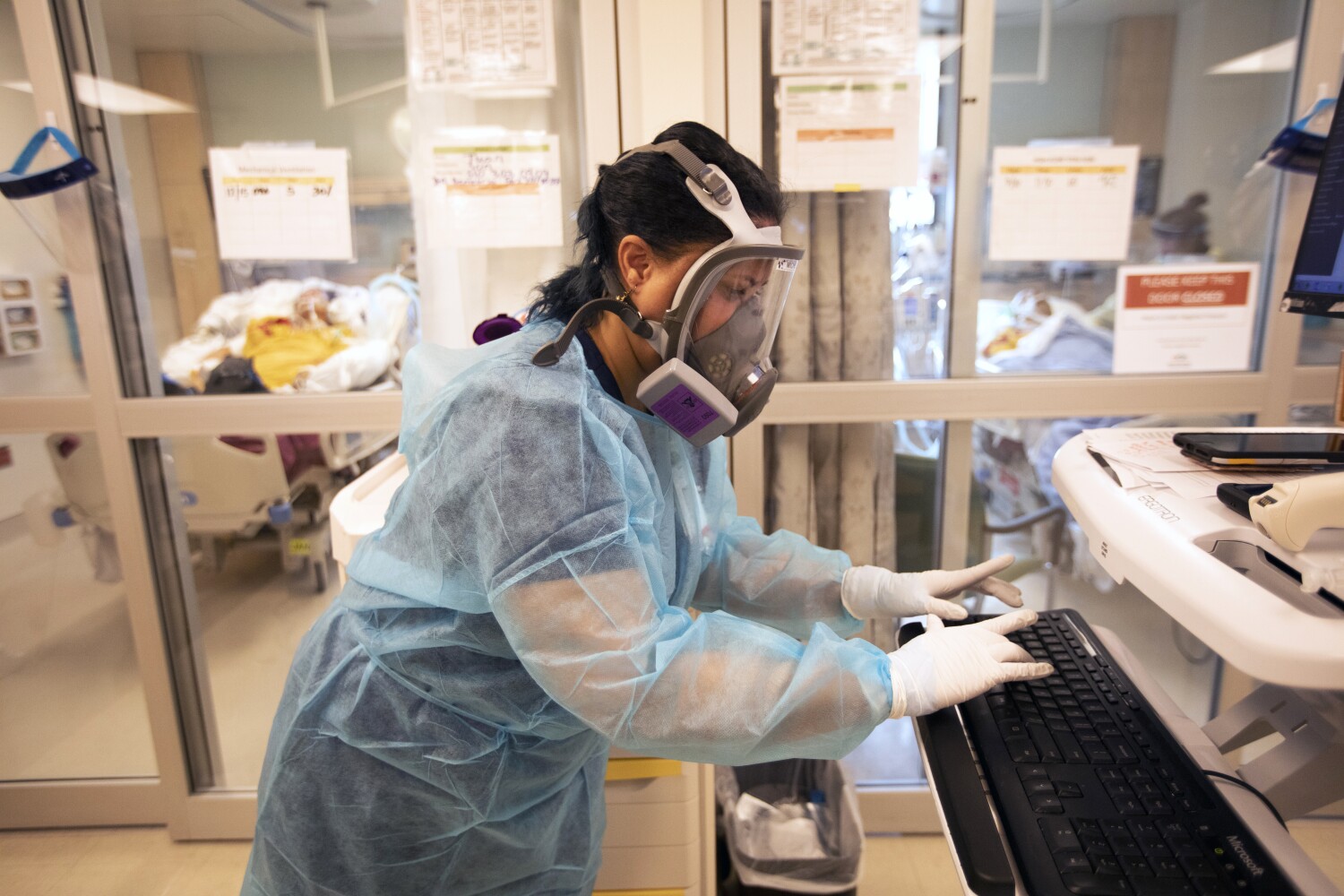[ad_1]

The unabated surge in coronavirus cases will likely result in extended stay-at-home orders for Southern California and other areas, as intensive care beds remain in dangerously short supply.
The earliest date that Southern California could have become eligible to exit the existing order was Monday, but state officials said Sunday that the region and several other areas would likely have to continue following the restrictions for several more weeks as the recent surge is pushing hospitals to the breaking point.
The restrictions include reduced capacity at retail stores; the closure of some businesses including hair salons, nail salons, card rooms, museums, zoos and aquariums; and a prohibition on most gatherings, hotel stays for tourism and outdoor restaurant dining.
Stay-at-home orders will remain in effect until the region’s projected ICU capacity is equal to or greater than 15%, according to state guidance. In the Southern California and San Joaquin Valley regions — which combined cover 23 of California’s 58 counties — the current available ICU capacity stands at 0%.
That doesn’t mean there are no unoccupied ICU beds, as the state ensures that some remain open for patients who don’t have COVID-19. But officials and experts warn that an overcrowded ICU can overburden doctors and nurses, imperiling the quality of care for everyone, including COVID-19 patients, heart attack victims and those who were seriously injured in a car accident.
“It is likely that the Regional Stay at Home Order will extend for many regions in California,” the California Department of Public Health said in a statement Sunday. Once a county reaches the threshold of 15% ICU bed availability or greater, it must maintain that status for four weeks.
The likely extension is no surprise. Gov. Gavin Newsom predicted as much on Dec. 21: “It’s very likely, based on those current trends, that we’ll need to extend that stay-at-home order,” he said during a briefing.
The state department of public health reported that the state has 2,122,806 confirmed cases to date, with over 24,000 deaths. There were more than 50,000 newly recorded confirmed cases on Saturday.
On Sunday, Los Angeles County health officials reported more than 42,000 new coronavirus cases over Christmas Day and Saturday combined. Friday’s numbers — 15,538 cases — were delayed because of an interruption with Spectrum internet service in the L.A. area. The county averaged about 13,800 new coronavirus cases a day and 88 COVID-19 deaths daily over the past week.
Orange County officials reported 3,200 cases on Sunday and one death.
Hospitals throughout the region are overwhelmed. Some are running dangerously low on their supplies of oxygen, critical to treating severely ill COVID-19 patients who have begun to suffocate on account of their virus-inflamed lungs. Emergency rooms are so overcrowded that ambulances have to wait as long as eight hours to drop off patients or are sometimes sent to hospitals farther away.
“Our hospitals are already over capacity, and the high-quality medical care we’re accustomed to in L.A. County is beginning to be compromised as our frontline healthcare workers are beyond stretched to the limit,” county Public Health Director Barbara Ferrer said during a briefing last week.
Under one scenario, experts predict there could be a jump in new coronavirus cases by mid-January, a surge in hospitalizations by late January and early February, and another spike in deaths by early to mid-February.
The quick succession of holidays in the fall and winter months typically allows people to celebrate and spend time with loved ones in a brief period.
But that leaves little time for coronavirus cases to start falling before they spike again.
Dr. Robert Kim-Farley, a medical epidemiologist and infectious disease expert at the UCLA Fielding School of Public Health, said a person who is exposed to COVID-19 at a Christmas gathering could be infectious by New Year’s Eve.
However, the individual may be asymptomatic, go to a New Year’s Eve party and unknowingly spread the disease, he said. Coupled with a high infection rate — about 1 in 95 in Los Angeles County are contagious with the virus, according to county estimates — the holidays are creating a “viral wildfire,” he said.
Times staff writer Joe Mozingo contributed to this report.
[ad_2]
Source link